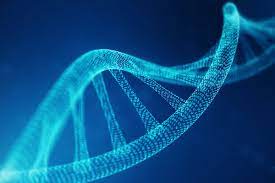The journey of data storage begins with the early bones, stones, and paper. Then, the storage material became tapes, flash memory cards, floppy phonograph records, and so on. Since then, Blu-ray discs, flash drives, CD and DVD technologies have emerged. All these materials are not biodegradable, so they will have a negative impact on the atmosphere when they decay.
With the advent of digital systems for production, transmission, and storage of information, effective and continuous digital media editing is required. Due to the need to store a large amount of digital data for future use, the problem arises in the unstoppable amount of data stored. The demand for data storage is growing day by day.

The total amount of global data storage in 2012 was approximately 2.7 ZB. The demand for savings grows by 50% every year. At present, almost all digital data is stored using technology that can only last for a limited time. The memory card and chip can be used for 5 years from the first use. Ordinary hard drives are easily damaged by high temperature, humidity, exposure to magnetic fields, or mechanical failures. Although solid-state drives are better than hard drives, they often lose work efficiency if they are not powered on for more than a few months. Therefore, researchers are committed to developing effective systems to overcome these obstacles.
Considering how fossil fuels store genes for many years, researchers are considering using deoxyribonucleic acid (DNA) as a storage medium.
DNA can store things in amazing ways. Castillo said that if we store it in DNA, all online information can be stored on a device smaller than a cubic inch. DNA seems to be the best solution instead of using 1 s and 0 s to store data in the computer.

DNA is composed of adenine, guanine, cytosine, and thymine (A, G, C, and -T). They have been paired like AT and GC and can be used to store information in binary code types. With the increasing demand for high-capacity media, DNA is considered an ideal choice because one nucleotide can represent two bits of information. Similarly, 1 gram of single-stranded DNA (ssDNA) can encode 455 EB data. All the information generated in the world in a year can be stored in only 4 grams of DNA. Since DNA is a three-dimensional (3D) structure, it has a high storage space. For thousands of years, DNA has provided thousands of readable and reliable information that can be extended indefinitely by drying and protecting it from air and water.
DNA can withstand a wide temperature range (-800°C-800°C). It uses energy a million times more efficiently than modern personal computers. In addition, it provides additional storage options because it stores data in an indirect format, which is different from most media that store data in a queue format. DNA provides many options for improving data latency and extraction because it allows bidirectional reading of data. The important fact that DNA is invisible to the naked eye ensures that DNA is safe and will not be damaged by organisms. Therefore, DNA may be the best biological data storage device in the future.